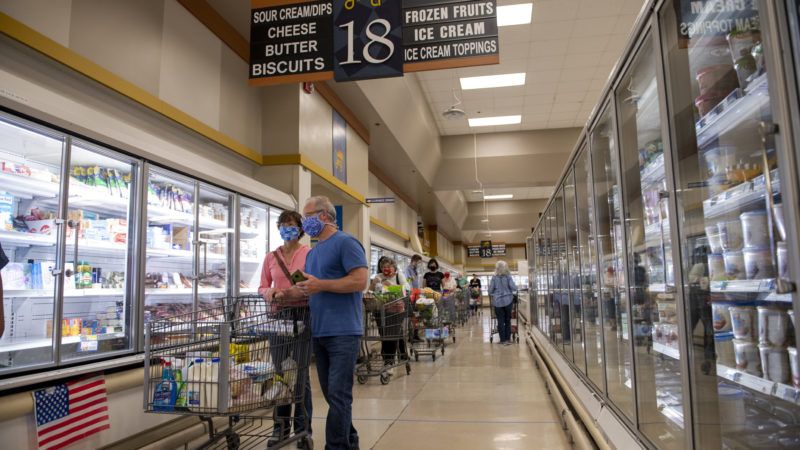A Middle Course Between COVID-19 Hopes and Fears
Control measures should be based on emerging evidence about the danger posed by the virus.

Despite what many people hoped, COVID-19 is clearly worse than the seasonal flu. But despite what other people feared, it does not seem to be nearly as lethal as the "Spanish flu" of 1918, which killed about 0.7 percent of the total U.S. population—equivalent to more than 2 million people today.
As we move from lockdowns to something more closely resembling normal life, the emerging evidence about the threat posed by COVID-19 should inform our judgment about which precautions make sense. The initial, ham-handed approach—which confined hundreds of millions of people to their homes except for government-approved purposes—should be replaced by more carefully targeted measures focused on protecting the people who face the highest risk.
According to the Centers for Disease Control and Prevention (CDC), the current "best estimate" of the death rate among Americans who develop COVID-19 symptoms is 0.4 percent. By that measure—the symptomatic case fatality rate (CFR)—COVID-19 is roughly four times as deadly as the seasonal flu but far less deadly than the Spanish flu.
Unlike the Spanish flu, which commonly struck down healthy people in the prime of life, COVID-19 primarily kills elderly people. The CDC estimates that the symptomatic CFR for people younger than 50 is just 0.05 percent, compared to 1.3 percent for people 65 or older and 0.2 percent for 50-to-64-year-olds.
In other words, older people, who account for about 17 percent of the population, are 26 times as likely to die from COVID-19 as people in the youngest age group. Age seems to be largely a proxy for serious preexisting medical conditions such as hypertension, heart and lung disease, and cancer, which are independently associated with COVID-19 deaths and become more common as people get older.
The CDC also estimates that 35 percent of people infected by the COVID-19 virus never develop symptoms, which implies that the infection fatality rate (IFR)—deaths as a share of total infections—is between 0.2 percent and 0.3 percent. That is far lower than the IFRs assumed in the horrifying worst-case scenarios that had a profound impact on COVID-19 control policies in the U.S. and around the world, which suggested that the disease could cause as many deaths per capita as the 1918 pandemic.
Those projections were never realistic, since they counterfactually assumed that people would carry on as usual despite COVID-19—that they would not take voluntary precautions such as avoiding crowds, minimizing social contact, working from home, wearing masks, and paying extra attention to hygiene. If the CDC's current estimates are in the right ballpark, those models also were based on IFRs that were much too high.
There is an even bigger gap between these new estimates and the crude case fatality rate—reported deaths as a share of confirmed cases. Even taking into account underreporting of deaths, the crude CFR, which currently is close to 6 percent nationwide, vastly overstates the lethality of the COVID-19 virus, since testing so far has been skewed toward people with severe symptoms, who are not representative of everyone who has been infected.
The national average also obscures striking regional variations in the percentage of COVID-19 patients who succumb to the disease. The current crude CFR in New York, for instance, is nearly 8 percent, compared to 4.3 percent in Florida.
One plausible explanation for that difference is that Florida (which lifted its lockdown at the end of April) strove to keep elderly COVID-19 patients away from nursing home residents. By contrast, Stanford epidemiologist John Ioannidis notes, "a very unfortunate decision of the governors in New York and New Jersey was to have COVID-19 patients sent to nursing homes."
The current challenge is finding a way to emulate Florida's apparent success in protecting people who are especially vulnerable to COVID-19 without broad business closure and stay-at-home orders, which are unsustainable and economically ruinous. We need to steer a middle course between our worst fears and our highest hopes.
© Copyright 2020 by Creators Syndicate Inc.



Show Comments (184)